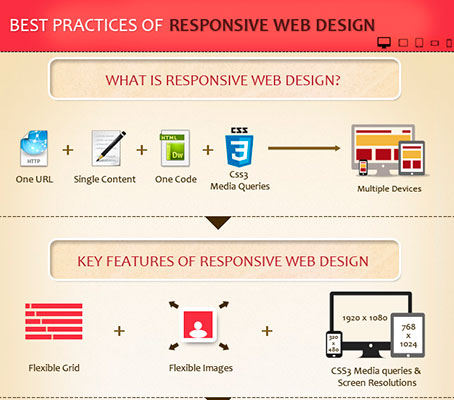Fundamental Aspects Of Website Design: Guidelines For Developing A User-Centric Site
Fundamental Aspects Of Website Design: Guidelines For Developing A User-Centric Site
Blog Article
Content Writer-Scarborough Secher
When it concerns web site style, making sure user-friendliness is key. From receptive layout to structured navigating, every component plays a critical function in developing a site that satisfies your target market's needs. However what about the finer information that can make or damage a customer's surfing experience? Stay tuned as we discover some often-overlooked suggestions that can boost your web site's usability to the next level, making it truly stick out in the electronic landscape.
Relevance of Responsive Style
Receptive layout is a crucial element of modern-day site growth. Ensuring your internet site is receptive ways that it can adapt to different display sizes and tools, offering a smooth experience for individuals.
With the raising use of smartphones and tablet computers to access the net, having a receptive layout is important for reaching a broader audience. It aids in improving customer experience by making your website easy to navigate and continue reading any kind of gadget.
Additionally, responsive design can favorably influence your search engine positions, as search engines like Google prioritize mobile-friendly websites. By having a receptive design, you're additionally future-proofing your internet site, as new devices with differing display dimensions continue to emerge.
Simplify Navigating Structure
To boost user experience and promote simple access to information on your web site, improving the navigation framework is vital. When developing your site, focus on creating a clear and user-friendly navigating food selection that helps site visitors locate what they're trying to find quickly.
Restriction the number of menu items to the basics, grouping relevant web pages together to stay clear of overwhelming users. Usage detailed tags that plainly show the material of each page, making it less complicated for individuals to comprehend where each link will take them.
Consider executing dropdown food selections for subcategories to avoid littering the primary navigation bar. Furthermore, consist of Suggested Reading on the web page for individuals who choose looking for details details.
Prioritize mobile responsiveness in your navigation style to make certain simple gain access to on all devices.
Optimize Page Tons Rate
Improving page load rate is essential for maintaining site visitors on your internet site. Slow-loading pages discourage users and can cause high bounce rates. To maximize web page load rate, begin by enhancing images. Press images without compromising quality to minimize their data dimensions.
In visit the following website , enable internet browser caching to keep frequently accessed sources in your area, speeding up lots times for returning visitors. Minify CSS, JavaScript, and HTML files by eliminating unneeded characters, comments, and formatting, boosting tons rate.
Take into consideration utilizing a material distribution network (CDN) to disperse your site's web content throughout numerous web servers worldwide, minimizing latency for users accessing your website from different areas. Lastly, restrict the use of third-party scripts and plugins, as they can substantially affect load times.
Final thought
In conclusion, by including receptive style, streamlining navigating, and optimizing page lots rate, you can develop an easy to use website that attract a larger audience and enhances user experience. These essential elements make sure that visitors can conveniently access and navigate your site throughout various tools, causing enhanced interaction and complete satisfaction. By concentrating on these key elements, you can develop a successful website that keeps individuals returning for more.
